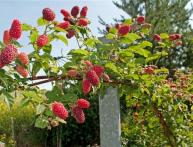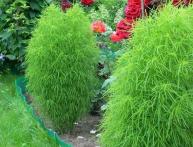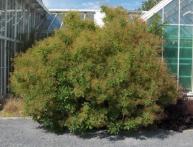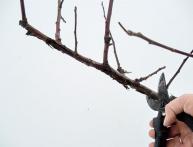The most effective methods of grafting fruit trees
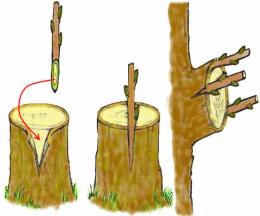
Graft trees is a combination of its different parts to grow a new species. This procedure is performed to grow rare varieties of trees and save garden space. If the site does not allow you to accommodate all the desired varieties of trees, then using grafting you can produce two varieties of fruits on one tree. Elimination of crown defects is also not an unimportant point.
If the seedling begins to grow incorrectly, its crown can be trimmed and grafted. Thus, the structure of the crown is improved and all defects are removed. This is also relevant for the treatment of trees damaged by rodents. Vaccinations should be done during the period when fruit trees begin to secrete juice - this is spring and summer. The trees should be no more than 10 years old, otherwise they will not take root well.
Content:
- The best methods of grafting and budding
- Grafting fruit trees with cuttings
- Basic rules of vaccination
- How to care for grafted trees
The best methods of grafting and budding
In gardening, there are two main methods of grafting fruit trees: budding and the use of cuttings. In turn, grafting by cuttings has several types of propagation:
- Copulation
- Half-split
- Cleavage
This method of grafting is carried out using a special budding knife. It is used to cut off the shield with the bud and wood from the shoot. The buds must be taken from the most developed shoot.Next, you need to make a deep cut in the bark with a knife, in the transverse and longitudinal direction. Moreover, this must be done in such a way that these two cuts form the letter T. The shields must be carefully inserted into the finished holes. Then, the budding site should be tightly bandaged with polyvinyl chloride film.
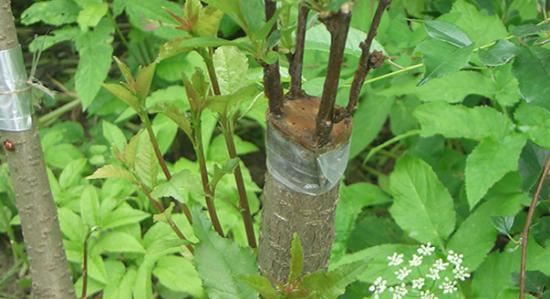
After two weeks, you need to check how well the shield has taken root. If everything is in order, then the harness can be loosened. If the shield does not take root, then re-budding is carried out on the opposite side of the tree. Trees such as cherry and cherries, are oculated from both sides at once. At the beginning of spring, the film is removed and the grafted branch is pruned in the area of the established bud.
Grafting fruit trees with cuttings
As mentioned above, this method has three varieties. The first of them is copulation. This method is the process of applying cuttings to oblique cuts. The attached cuttings should be lubricated with garden varnish. Half-split grafting is a modified copulation method. In this case, you need to make longitudinal sections resembling the shape of a castle. The semi-split grafting process is carried out in several stages:
- A deep cut into the scion (the grafted part of the tree).
- Trimming the bottom of the cutting and attaching it to the tree.
- Tying the grafted tree, followed by treatment with garden varnish.
Split grafting can be done on branches of any diameter. In this case, it is necessary to split the end of the branch. The created hole must be expanded with the end of a garden hatchet. One or several cuttings are inserted into the finished slot. Their number depends on the thickness of the hemp. After applying the cutting, the gap is closed with a piece of bark and treated with garden varnish.
There is another effective way grafting of fruit trees - crown grafting. This method has several nuances. First of all, you need to remember that the grafting branches should be located at a distance of 1 m from the ground. On one of the branches it is necessary to make a side cut, on which a vertical cut is made.
In this case, you need to ensure that the core of the tree is not damaged. The tree bark should be moved back so that the cutting fits into the hole without friction.
Two or three scions, 4 cm long, are inserted under the bark. The finished structure is tied with twine. In order to prevent damage by microbes, the grafted bark is sprinkled with wood ash. Next, in order for the graft to take root faster, it needs to be wrapped in polyethylene.
By grafting trees, gardeners have the opportunity to grow several varieties of different fruits on one trunk. Also, thanks to grafting, you can completely rejuvenate the garden and saturate it with new varieties.
Basic rules of vaccination
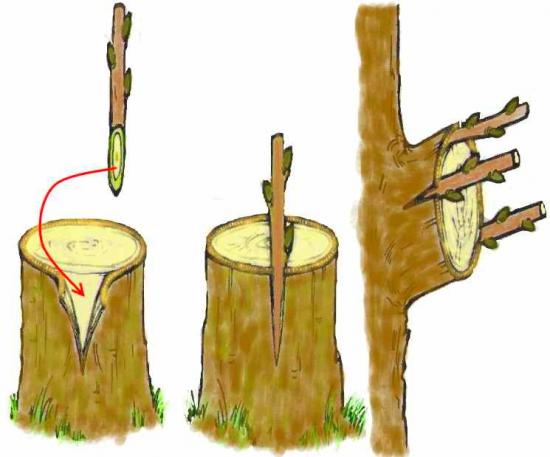
To start the vaccination process, you need to learn a few simple rules:
- Tree to be grafted onto new varietymust be completely healthy.
- You cannot graft a tree with a damaged trunk.
- The process itself must occur quickly so that exposure to light and air cannot dry out the cut.
- If the fruits of a grafted tree have seeds, then its age at grafting should not exceed 10 years.
The places to which the scions will be attached must be clean throughout the entire work. Tree cuttings must be intact and healthy. Trees such as pear and apple can be grafted at any age. Preparation of cuttings is carried out in the autumn period of the year. They are placed in sand and stored there throughout the winter.Ready cuttings can be stored in the cellar. When combining several varieties, you need to remember that the timing of fruit ripening must coincide in time.
How to care for grafted trees
In summer, the bandages from the grafted cuttings are slightly loosened. Branches with established shoots are pruned by twenty centimeters. All buds that are located above the budding site must be cut off so that the thorns do not become denser. When shoots grafted buds reach a length of 20 cm; they should be tied to thorns so that they do not break off.
And for vigorous species of fruit trees, the buds are tied to high sticks. Throughout the entire season, growing shoots are tied to the same stick about four times. Under no circumstances should shoots be completely removed, otherwise plastic substances will stop accumulating.
An example of grafting a tree using a comb in the video:




